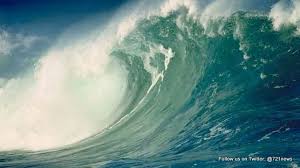
Introduction
Tsunami waves represent one of nature’s most powerful phenomena, capable of causing catastrophic damage to coastal regions. Their unpredictability and immense strength have made them a topic of great importance within environmental science and disaster preparedness. As climate change continues to influence ocean dynamics, understanding the mechanisms behind tsunami waves is crucial for safeguarding communities around the world.
What Causes Tsunami Waves?
Tsunami waves are typically triggered by underwater seismic activity, such as earthquakes. The International Tsunami Information Center (ITIC) notes that approximately 80% of tsunamis occur within the Pacific Ocean, particularly along the ‘Ring of Fire,’ a region expressed with heightened seismic activity due to tectonic plate boundaries. In addition to earthquakes, other causes can include volcanic eruptions, landslides, or even meteorite impacts.
Recent Events and Statistics
Notable tsunamis in history, such as the 2004 Indian Ocean tsunami, have resulted in devastating effects—over 230,000 people lost their lives due to that event. More recently, the March 2011 tsunami in Japan, triggered by a magnitude 9.0 earthquake, caused the Fukushima nuclear disaster and led to significant infrastructural damage, affecting millions of lives. According to the National Oceanic and Atmospheric Administration (NOAA), tsunami waves can travel at speeds of over 500 mph in deep water and can reach heights of more than 100 feet when they approach shore.
Preparedness and Response
Given the destruction caused by tsunami waves, preparedness is essential. Coastal regions around the world are implementing early warning systems to alert residents of potential threats. These systems rely on seismic data at ocean observation buoys and land-based tsunami sensors. Moreover, community education and regular evacuation drills play critical roles in ensuring that residents understand the proper safety protocols during a tsunami warning.
Conclusion
The significance of tsunami waves goes beyond their immediate destructiveness. As climate change progresses and sea levels rise, understanding and preparing for these natural disasters become paramount for affected communities. Scientific advancements in monitoring and early warning systems provide hope for minimizing future impacts. While we cannot prevent tsunamis, increased awareness and preparedness can save lives and reduce economic losses, making it crucial for coastal residents to stay informed and vigilant.



